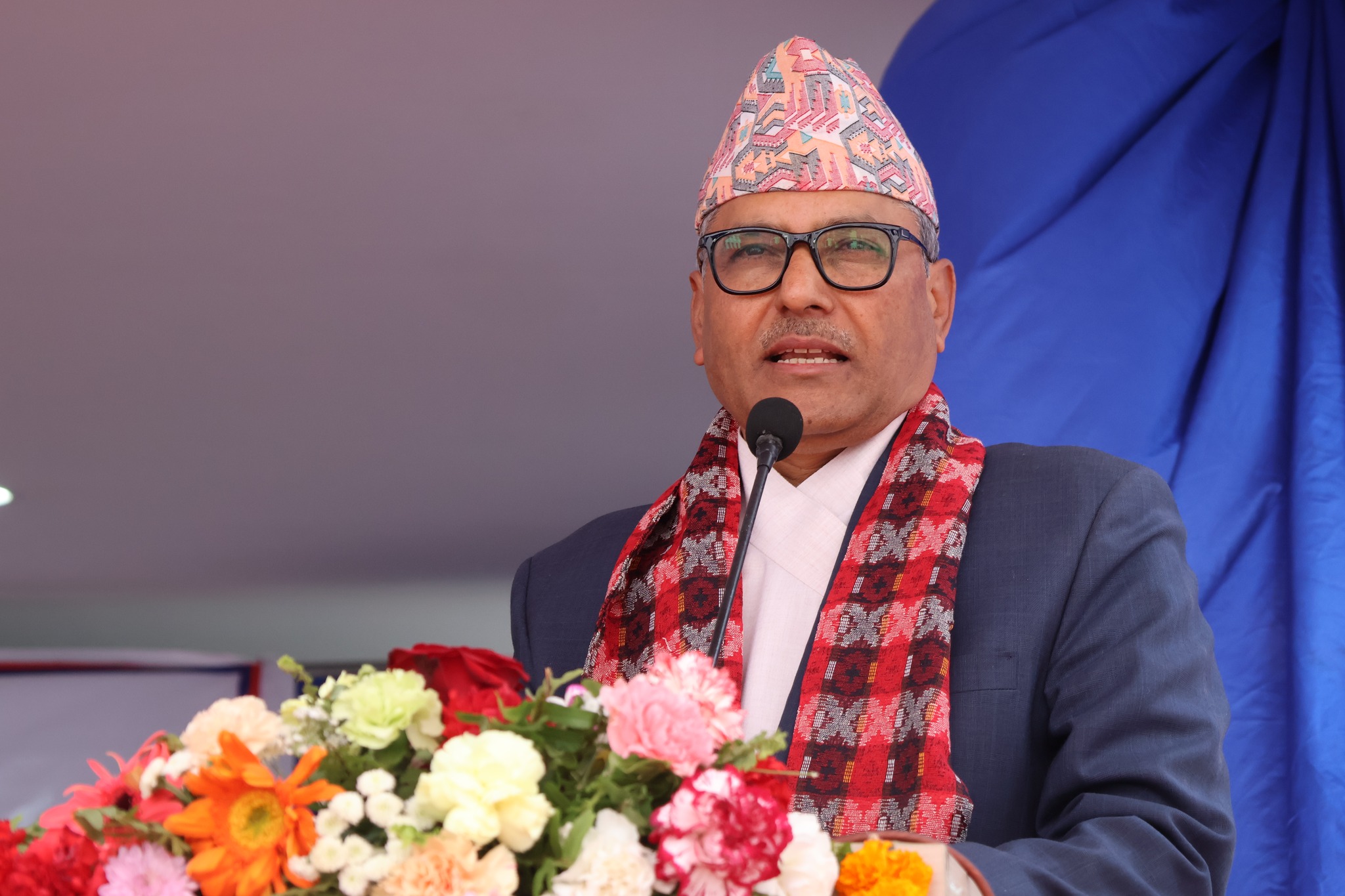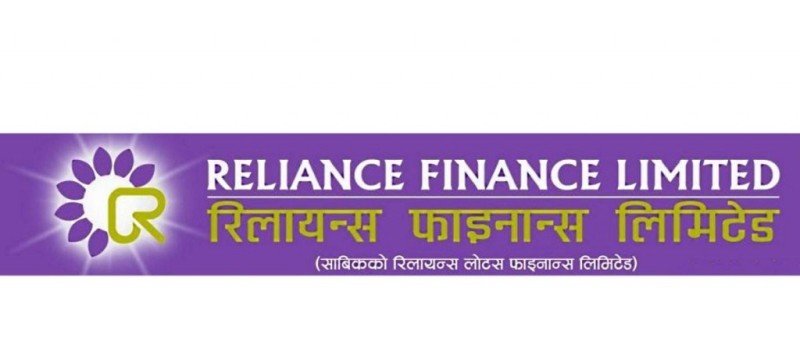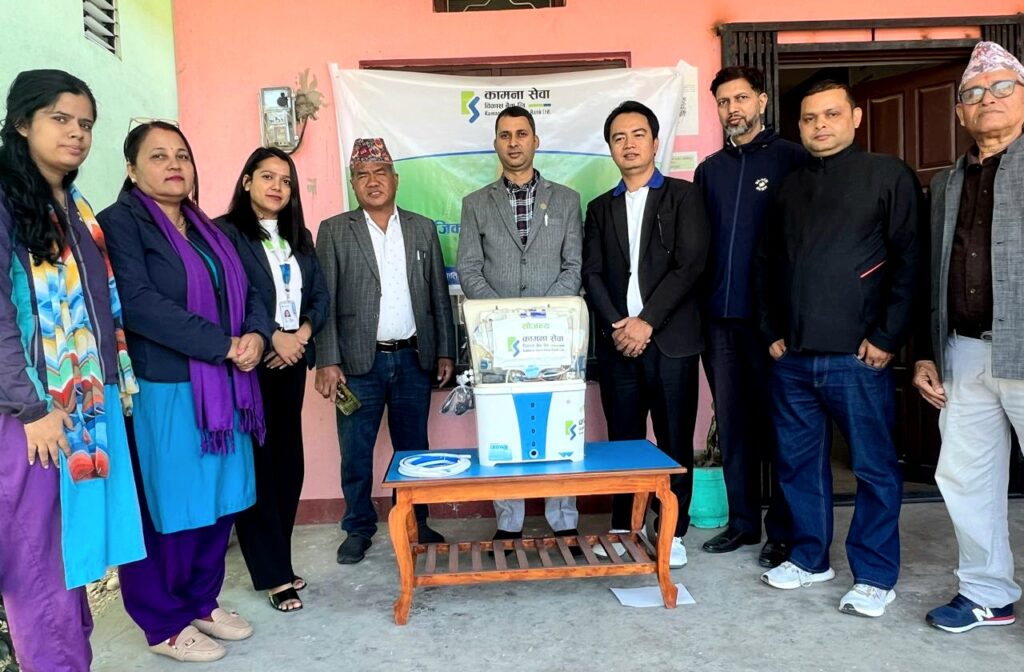Kathmandu. Governor Maha Prasad Adhikari has left Nepal Rastra Bank since Friday.
Governor Adhikari left Nepal Rastra Bank after organizing a press conference at the central bank in Baluwatar. The government had appointed Adhikari as the Governor of Nepal Rastra Bank on Chaitra 24, 2076. He has officially left today.
In the press conference, Governor Adhikari informed about the work done during his five-year tenure. He had made public a book (document) of the major works and achievements done during his tenure.
##
## ##Governor Adhikari’s speech at the farewell program
##
## The Nepal Rastra Bank Act, 2058 BS has entrusted Nepal Rastra Bank with the responsibility of maintaining the country’s price and external sector stability, maintaining financial stability, and enhancing public confidence in the financial system. To fulfill this responsibility, the bank has been formulating and implementing policy arrangements including monetary policy, regulatory policy, foreign exchange policy, etc. In order to maintain financial stability, the bank has been adopting various international best practices and making the regulation and supervision of financial institutions effective.
In the journey of Nepal Rastra Bank to fulfill the above responsibilities, I had the opportunity to lead this prestigious institution as the seventeenth Governor from 2077 to 2081. Due to the global COVID pandemic that began towards the end of 2019, most economic activities were affected, and the global economy, including Nepal, contracted significantly. Without recovering from the pandemic, we had to face high inflation caused by tensions between Russia and Ukraine. Even in such difficult and challenging times, the bank has been able to maintain overall economic stability due to the careful and appropriate policy arrangements taken by this bank. Along with the fear of infection, the active role of the Board of Directors and all employees of this bank has made it possible to always continue the bank’s operations. Even in difficult situations, the banking sector has maintained its services by following the instructions of this bank. In recent times, the external sector has been strengthening, while the pressure created on prices has gradually reduced, and inflation has remained within the target of monetary policy.
Significant reforms have been completed in the past five years with the aim of fulfilling the responsibilities assigned by law and making the bank’s operations more effective. Monetary policy has been modernized and liquidity management has been made more effective. Financial institutions are being continuously supervised/monitored based on concepts such as anti-money laundering and cyber security supervision, supervision of institutions involved in the payment system, and supervision of non-bank financial institutions, adopting international best practices for effective regulation and supervision of the financial sector. Due to the incentive arrangements taken by the bank, the country has made significant progress in expanding digital payments. Investment by fintech companies, institutions related to payment services, the activism of bank financial institutions, and the interest of the general public have brought about a revolution in electronic payments. Significant achievements have also been achieved in financial customer protection and public awareness while promoting financial inclusion.
During this period, various policy, institutional and procedural reforms have been made to make the bank’s work modern, systematic and more effective. Most of the bank’s operations have been made technology-based by recruiting appropriate human resources to make service delivery faster and more effective. During this period, the financial position of Nepal Rastra Bank has also improved significantly. Investment diversification and the introduction of the shift work practice have further increased the bank’s income. The bank’s audit of the last four years has been completed on time and the annual report has been submitted to the Government of Nepal. Progress has been made in the physical construction of the bank, and additional efforts have been made to strengthen international relations.
This document has been prepared with the aim of integrating the work performed by Nepal Rastra Bank in the last five years and keeping it as an institutional memory. Although various documents covering the activities of the bank have been published in the past, this is the first publication of this nature. It contains details of the amendments/reforms made to various policy and institutional arrangements that the bank has been doing since the past and the important work and initiatives undertaken in the last five years. I am confident that this publication will be useful in the issues of policy arrangements and procedural reforms to be taken by the bank in the coming days and will become a source for all stakeholders to get information and be informed about the important work done by the bank for the improvement of the economy.
On this occasion, I express my heartfelt gratitude to the Government of Nepal for providing me with the opportunity to lead a prestigious institution like Nepal Rastra Bank. I am grateful to the Board of Directors of the bank, Deputy Governors, Executive Directors, Directors and all the employees of the bank who have played an important role in the performance of various tasks by the bank in the last five years. I would like to express my gratitude to all the banks and financial institutions, the Government of Nepal, the Ministry of Finance and other government agencies, the Office of the Auditor General, the respected commissions, the Nepal Army, the Nepal Police, private sector organizations, the media sector, the intellectual community, foreign central banks, the International Monetary Fund and other donor agencies, international organizations and the general public for their continuous support in the functioning of the Bank.
In addition, I would like to express my gratitude to the former governors, learned economists, distinguished individuals and the media who advocated for the autonomy of the Bank and helped to keep the dignity of the Bank intact even in the adverse circumstances faced by the Bank.
Finally, I would like to thank all the departments, offices, divisions and units that provided information, statistics and details to prepare this document. I would like to express my special gratitude to Deputy Director Siddha Raj Bhatta, Assistant Director Pushpa Chandra Khanal, Assistant Director Pratima Adhikari, and Computer Officer Aman Lal Shrestha of the Governor’s Office, who played an important role in this work. I would also like to thank Dr. Dilliram Pokhrel, Acting Executive Director of the Governor’s Office, and Muktinath Sapkota, Secretary to the Board of Directors and Directors, for their editorial work during the preparation of the document. I would also like to express my gratitude to all concerned, including the Executive Director and Directors of the Bank, who provided suggestions during the preparation of the document and assisted in language editing.
Major-Activities-of-Nepal-Rastra-Bank






















